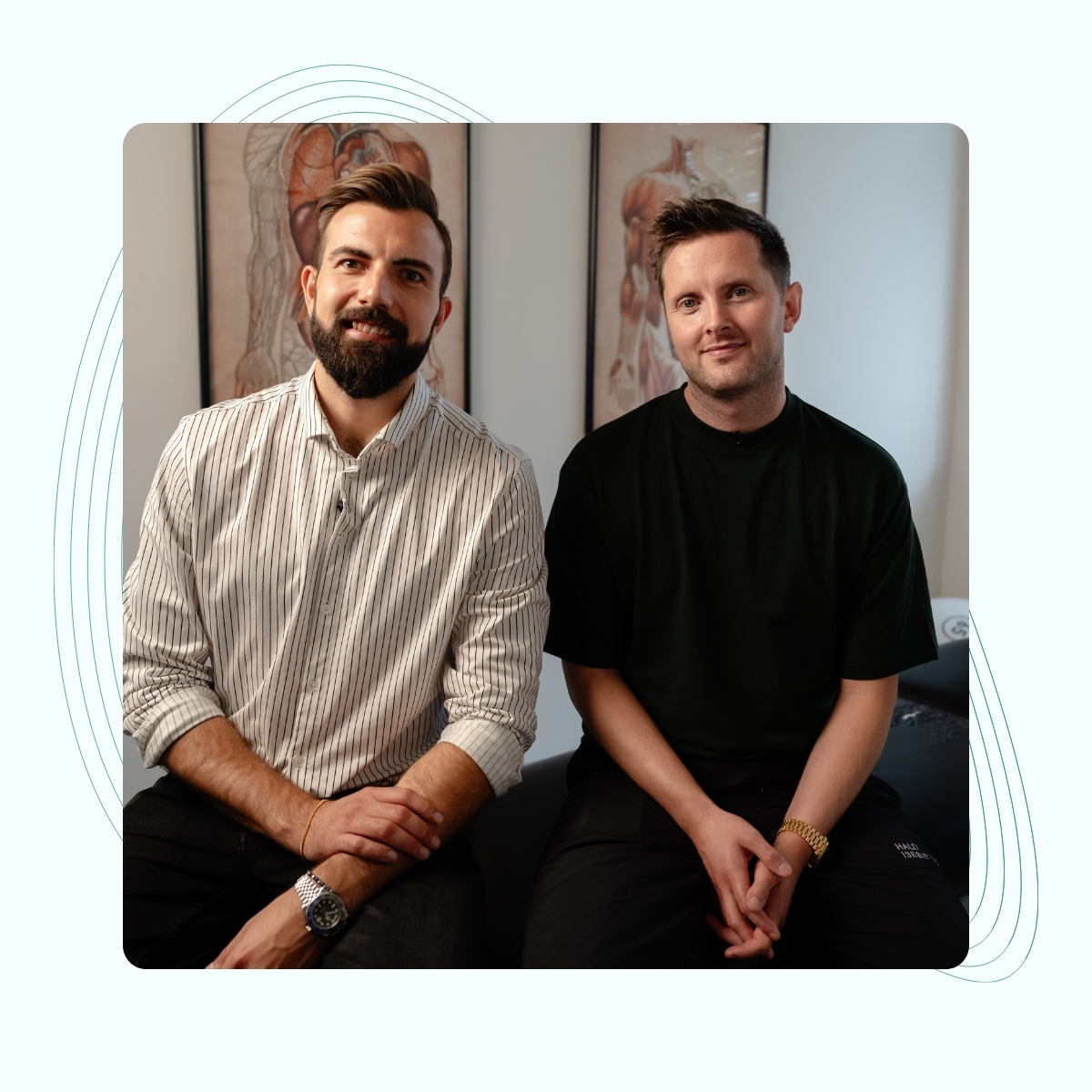We treat
Headache
Learn more about headaches
Headache
Most people at some point have experienced having a headache. Headaches can be either a disease or a symptom of another problem or condition. Many people have at some point sought help from their GP and headaches are considered to be a significant cause of sick leave. Children, like adults, can also get headaches and it is estimated that up to 40% of all children under the age of 7 have had headaches and up to 70% before the age of 15.
Jump to section [Vis]
Headache location
Headaches and migraines can be experienced in different ways.
The headache can be in the temple, the headache can cause nausea, the headache can be experienced in the forehead, the headache can be in the back of the head and trigger fatigue and nausea, the headache can last for minutes, hours or days. Headaches and migraines can affect most people. The following are the most common types of headaches and migraines.
Headache on the top of the head
This type of headache can be related to the top cervical vertebra (C1) or the nerves that emerge from the vertebra. Locking, lack of movement, or osteoarthritis can affect the nerves. This headache is often called a cervicogenic headache or neck headache.
Headache in the temple or side of the head (right or left)
This type of headache can be caused by the nerves originating from C2 or the second cervical vertebra. Locking in the cervical vertebra, osteoarthritis or herniated disc can cause this. This type of headache can be categorized as a cervicogenic headache or neck headache.
Source: Physio-pedia.com

Headache in the forehead
This type of headache most often stems from pressure in the dural system, i.e. mechanical influences on the meninges that protect the brain. These membranes originate from the inside of the frontal bone. Tightness of the membranes caused by, for example, epidural puncture, whiplash, concussion, fall on the tailbone, etc. can cause problems in the dural system and therefore headaches in the forehead. In addition, sinusitis, tension headaches, cluster headaches, etc. can be the cause of headaches in the forehead.
Headache in the back of the head
Headaches in the back of the head most often originate either from muscular tension in the suboccipital muscles (see more under tension headaches) or from mechanical problems in the dural system (meninges). These membranes attach to the suboccipital muscles and can also be the cause of tension headaches in the back of the head. Headaches in the back of the head can also originate from stress, posture, exhaustion, etc.
Throbbing headache – pulsating headache – headache inside the head
Throbbing or pulsating headaches are always caused by problems in the blood system or circulation. Here, pressure or blood pressure in the head, backflow of venous blood from the head (thoracic inlet syndrome) or influence on the hormonal system can be the cause. Tension in the meninges and increased pressure in the cerebrospinal fluid can also affect and cause throbbing or pulsating headaches. This type of headache can be involved in migraines, cluster headaches, tension headaches as well as problems in the blood system such as low and high blood pressure.
Headache behind the eye
Headaches around or behind the eye can also be caused by increased pressure in the head. The body has three places where pressure receptors are located, in the carotid artery, in the artery in the neck and behind the eye. Therefore, these areas are very sensitive to changes in pressure and blood pressure. In addition, sinusitis, migraine, tension headaches, cluster headaches, etc. can be the cause of headaches behind the eye.
Headaches and jaw tension
Jaw problems such as a misaligned jaw joint, a cracked jaw joint, a misaligned bite, osteoarthritis in the jaw, jaw locking, grinding teeth, etc. can often be the cause of tension in the large jaw muscles, the temporal muscle or the buccinator muscle.
Headache on the surface of the head
This type of headache can always be caused by the connective tissue and muscles that are attached to the skull or head itself. The neck muscles that are tense are the most common cause of headaches located on the surface of the head. This type can be categorized as a tension headache.

Persistent headache
Persistent headaches can be incredibly debilitating. This type often leans towards migraines which can also last for a long time. Persistent headaches can come in all forms, i.e. cervicogenic headaches (neck headaches), hormone-related headaches, tension headaches etc.
Headache and nausea
Headaches and nausea often go hand in hand. The cause is still unknown, but there are several theories that try to explain the connection. One theory is that the area of the brain that is affected during a migraine or headache controls the production of nausea. Another theory is that the secretion of serotonin, a signal substance in the brain, is reduced during migraines and headaches. This substance plays a major role in the production of nausea.
Headaches and stress
Stress, anxiety, burnout are major headache triggers. Stress and anxiety increase the level of tension in the muscles (tension headaches), stress dilates the blood vessels in the head, which can both trigger headaches and migraines as well as worsen the symptoms.
In this video, we show a simple technique to mobilise the trigeminal nerve, which is often involved in headaches.
What different types of headaches are there?
There are many types of headaches.
Below are the most common ones as well as information about how they occur, causes and treatment.
Tension headache
Tension headaches or mechanically triggered headaches are often caused by locking in the neck and back, tension/myosis in the neck and back muscles, stiffness in the chest and in some cases trauma to the tailbone. The symptoms often occur during the day and become worse in the afternoon or evening. The head will always strive to stay horizontal, which can cause imbalances around the body that can cause tension headaches. Poor working postures, sitting work and incorrect posture are often frequent causes of tension headaches.
Cervicogenic headache or neck headache
This type of headache is often caused by locking in the neck, misalignment of the cervical vertebrae and or muscle tension in the neck and throat muscles. Cervicogenic headaches (neck pain) have many similarities to tension headaches, but what separates the two types is that cervicogenic headaches (neck pain) can already occur in the morning, whereas tension headaches increase during the day.

Hormone-related headaches
Hormone-related headaches can be caused by high/low metabolism and/or menstrual problems.
Other cases may be related to digestive problems, vitamin/mineral deficiencies, psychological problems, and autonomic nervous system disorders. This type of headache is not related to body postures such as cervicogenic headaches (neck headaches) or tension headaches. Therefore, the cause of this type of headache often lies in multiple systems in the body, including the organ system, the cranio-sacral system, and the vascular system.
Horton’s headache/cluster headache
Horton’s headache, also called cluster headache, manifests itself in the form of attacks of pain in or around one eye. The eye becomes red and watery. The nose may also run or stop and the area around the eye swells, the upper eyelid may droop and the pupil becomes smaller. All symptoms occur on the same side of the head and the attacks usually always occur on the same side.
Headache due to medication overuse
Medication overuse headache or MOH is a type of headache caused by overuse or incorrect medication of various drugs. Medication overuse headache can in many cases be classified as a chronic headache as it can last 15 days a month for a period of 3 months. This type can be difficult to treat as various organ systems are affected, including the liver, kidneys and parts of the intestinal system. Here the importance of optimizing conditions for organs in which osteopathy is specialized is important.
Migraine – a different kind of headache
Migraine headaches are headaches that either last longer or have significantly more severe symptoms than other types of headaches (tension headaches, cervicogenic headaches, neck headaches, hormone-related headaches). A migraine attack can last from a few hours to several days. This type of headache can be quite disabling for many patients, as they are unable to perform work or daily functions. Tension headaches, cervicogenic headaches (neck headaches) or hormone-related headaches are often the precursors to migraine headaches.
Pregnancy headaches
This type affects almost all women who go through pregnancy at some point. Factors such as increased hormones in the body, stress, increased blood pressure or low blood pressure, fluid in the body, lack of sleep, sore neck muscles, lack of fluid can cause headaches during pregnancy. Other factors such as preeclampsia can trigger headaches or migraines as rapid weight gain or fluid in the body can affect the internal balance. However, it is often seen that migraines can be reduced during pregnancy due to increased hormones.
Medication is not recommended for this type of headache as the risk of fetal harm is high and pregnancy headaches can often more easily lead to medication overuse headaches.
Typical symptoms of headache or migraine
Headaches (tension headaches, cervicogenic headaches, neck headaches and hormone-related headaches) are often experienced as tension in the neck and/or shoulders that pulls up to the head. Other symptoms may include dizziness, nausea, malaise and a feeling of pressure in the temples that can spread to the entire head.
Symptoms of migraine can often be confused with headaches (tension headaches, cervicogenic headaches, neck headaches and hormone-related headaches), but the symptoms are generally longer-lasting and more severe.
Pain in the temples, pain in the forehead or back of the head, throbbing (pulsating, pressing) pain in the head, tension in the head, neck and/or shoulders, visual disturbances, tinnitus can often be experienced.
During migraine attacks, sensitivity to sound and light, difficulty concentrating, vomiting and malaise can also often be experienced.

When should you see a doctor?
The following symptoms may be an indication of pathology.
tiff neck, headache with high fever, numbness in arms and/or problems controlling arms, memory problems, unsteady gait and speech problems. In addition, you should seek medical attention if you have problems with consciousness, have seizures or are very tired.
Good advice for headaches and migraines
There are many different measures that can be used to treat headaches. However, most measures work individually and the effect varies.
Keep a headache diary
This can be a way for you to see which factors affect the headache, when the headache most often occurs, and give you insight into what type of headache you are suffering from.
Eliminate stress that affects headaches
Stress, especially long-term stress, has a negative effect on the body. Stress disrupts hormone balance, increases blood pressure and changes blood sugar balance to the negative. These factors will most often influence the development of headaches and migraines.
Sleep and headaches
Headaches and migraines are very sensitive to too little sleep or sleep problems. Lack of sleep slows down healing in the body and disrupts the circulatory system. Increase your sleep and improve your headaches and migraines.

Osteopathic approach to headaches
The cause of the headache and migraine must be localized. Therefore, all systems must be examined (musculoskeletal system, nervous system, hormonal system, blood system, organ system and craniosacral system) before a diagnosis can be made. The problem can then be treated holistically so that lasting results are achieved.

Often related problems
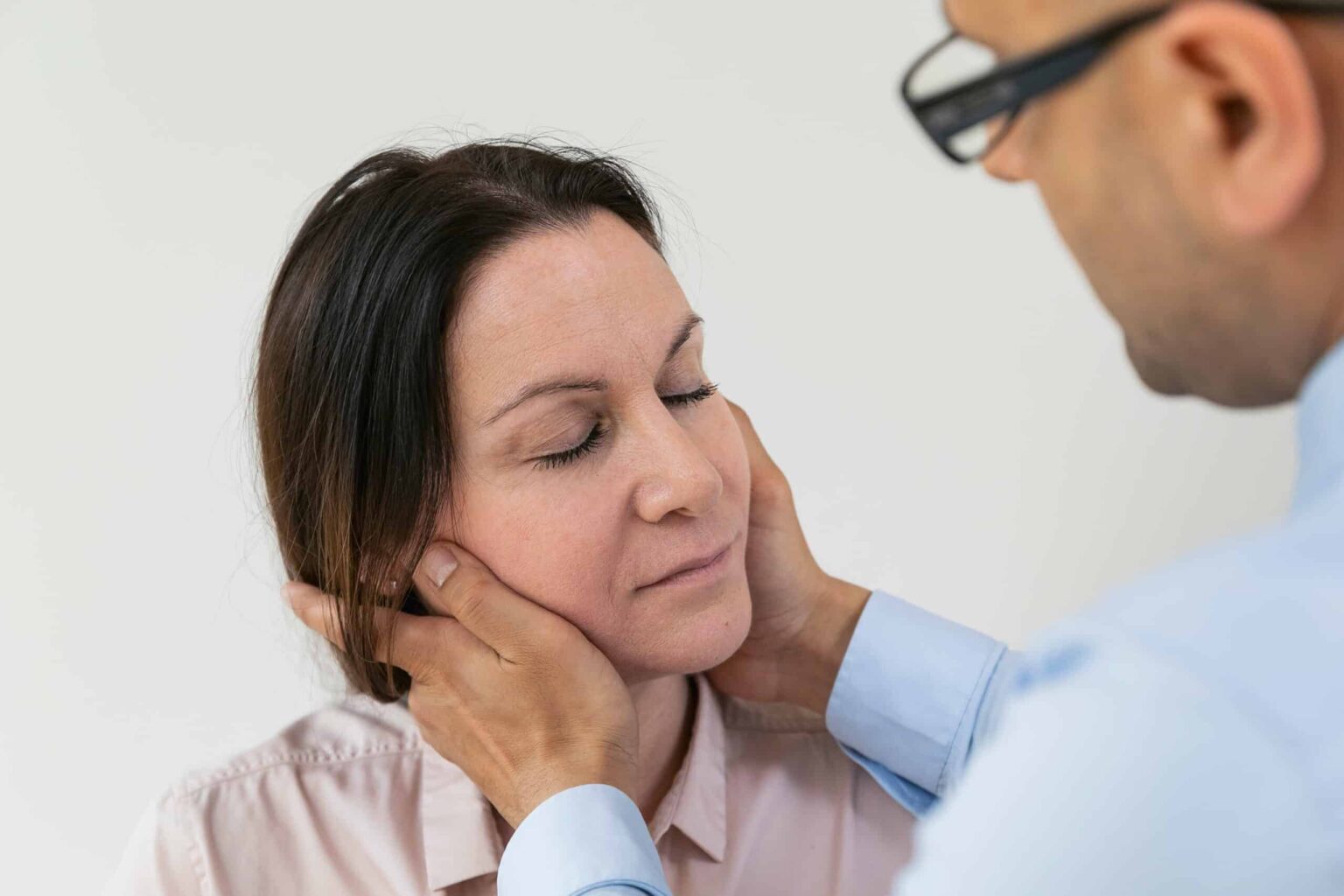
Jaw joint pain
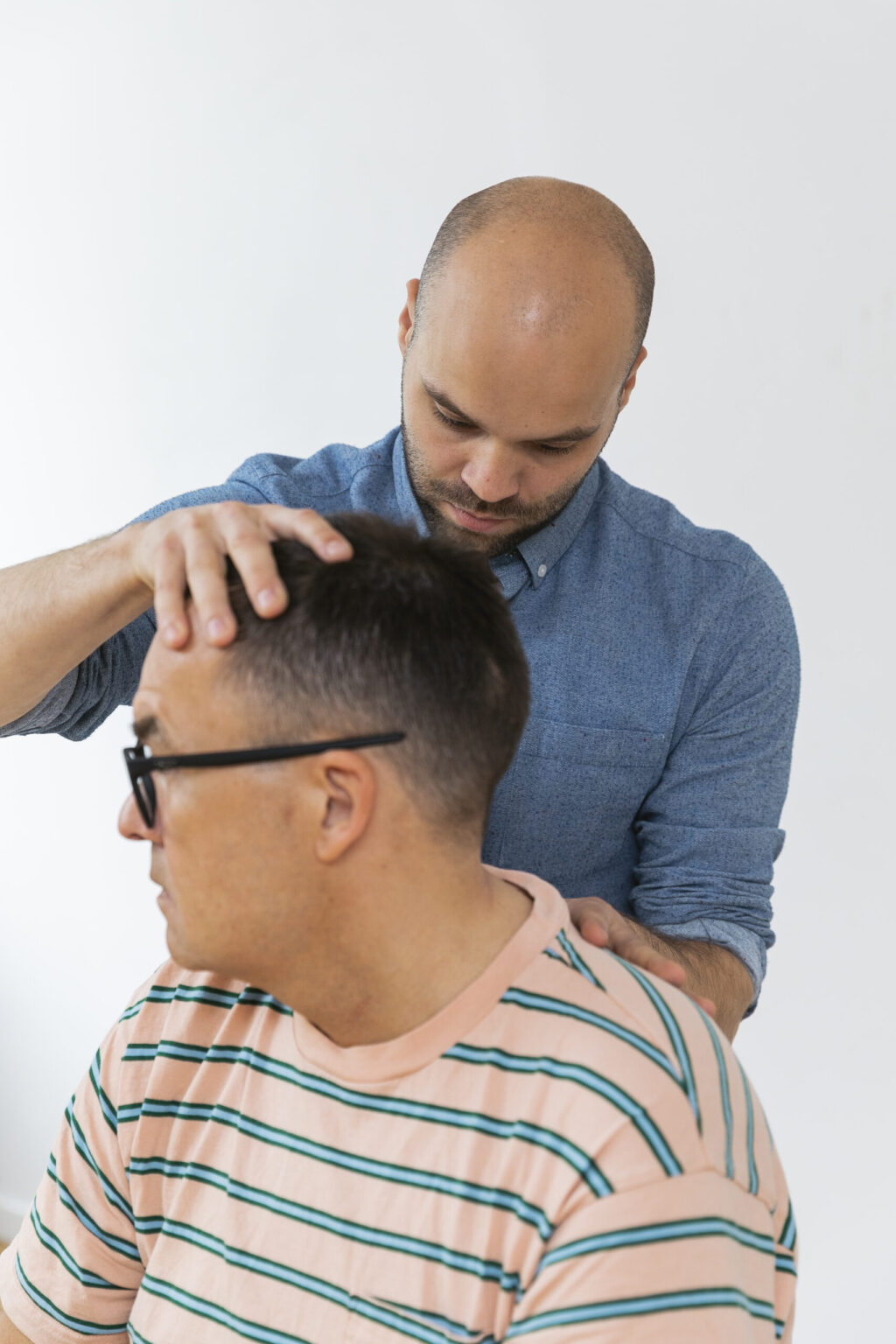
Brain hemorrhage
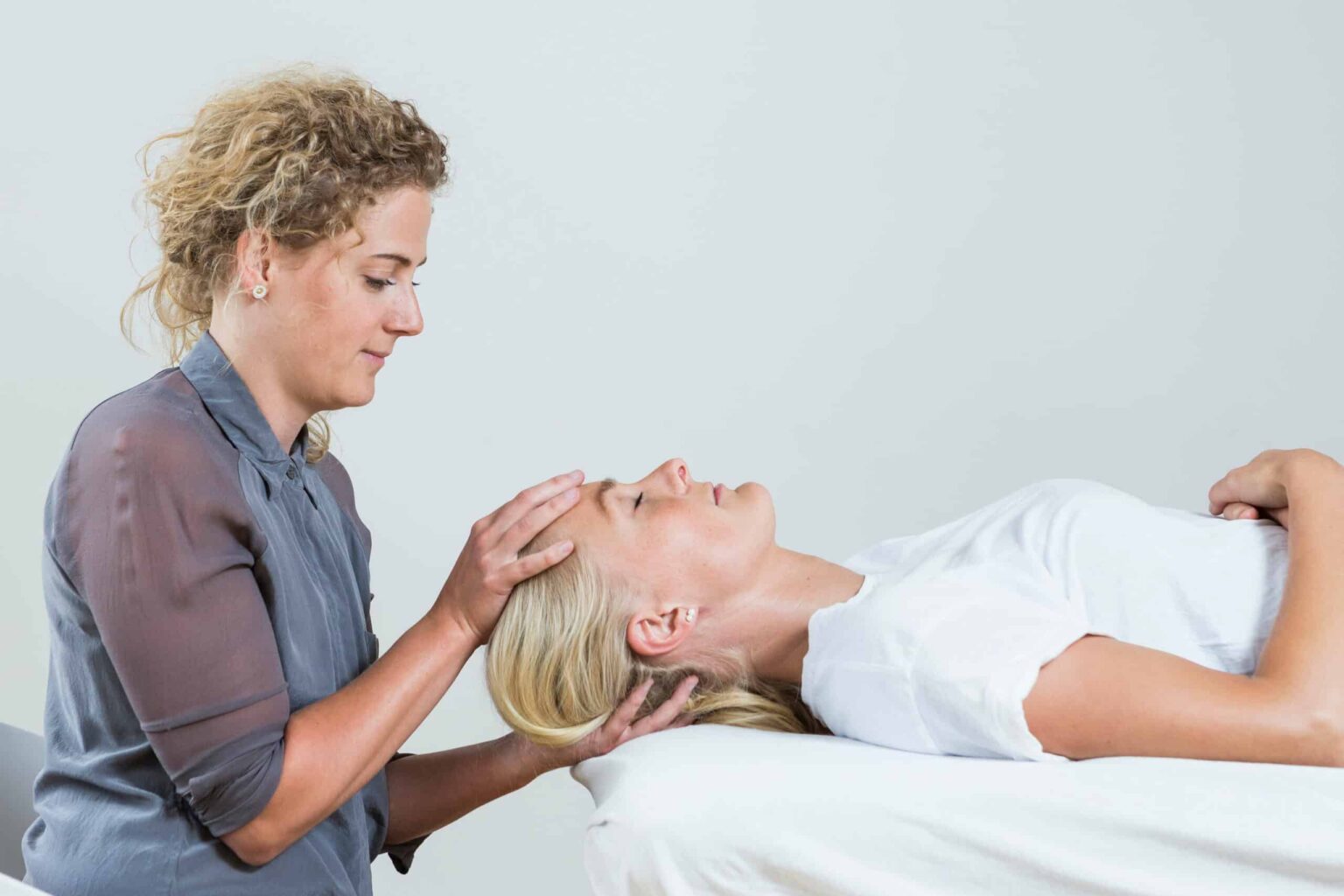
Post-traumatic headache
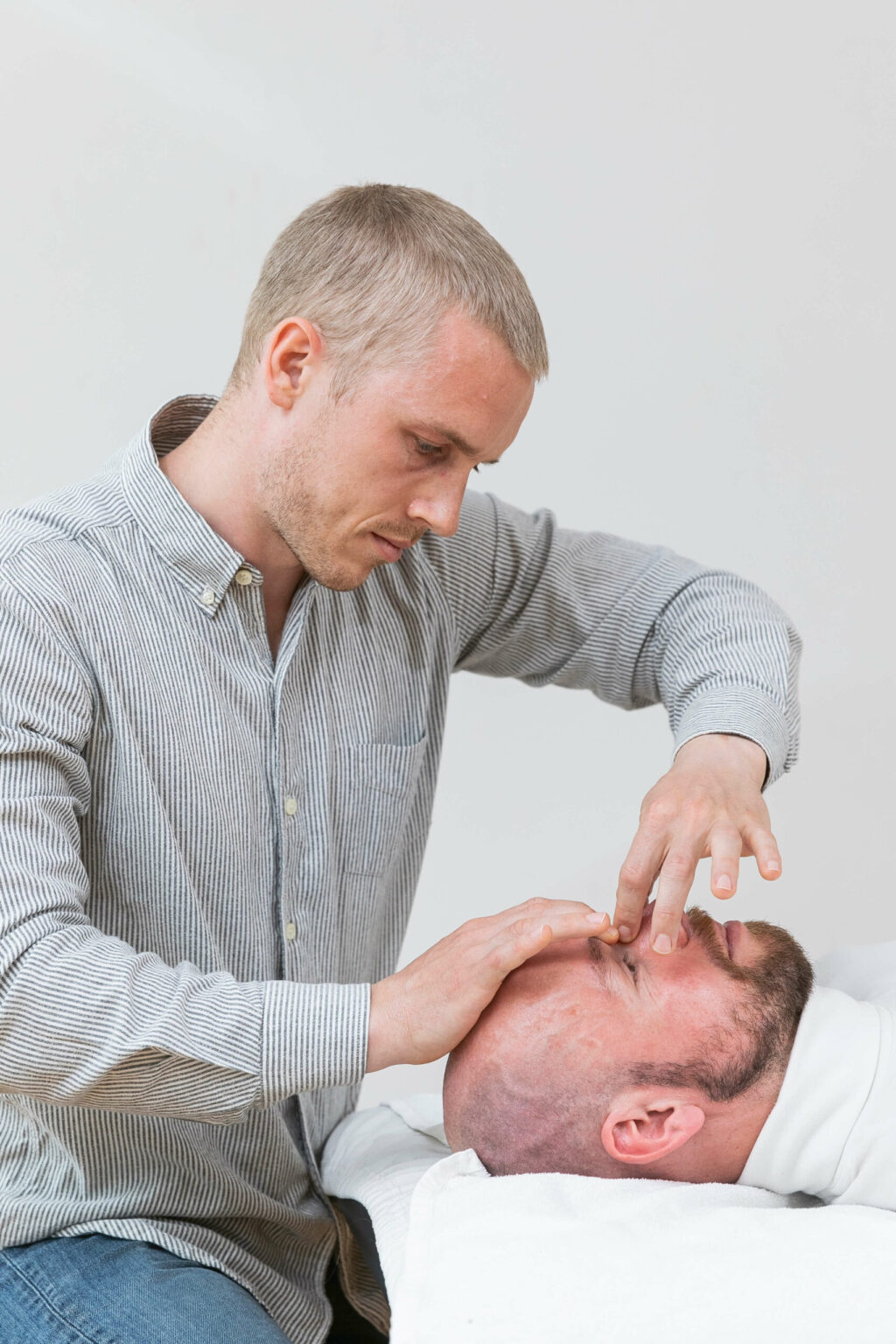
Sinusitis

Tinnitus
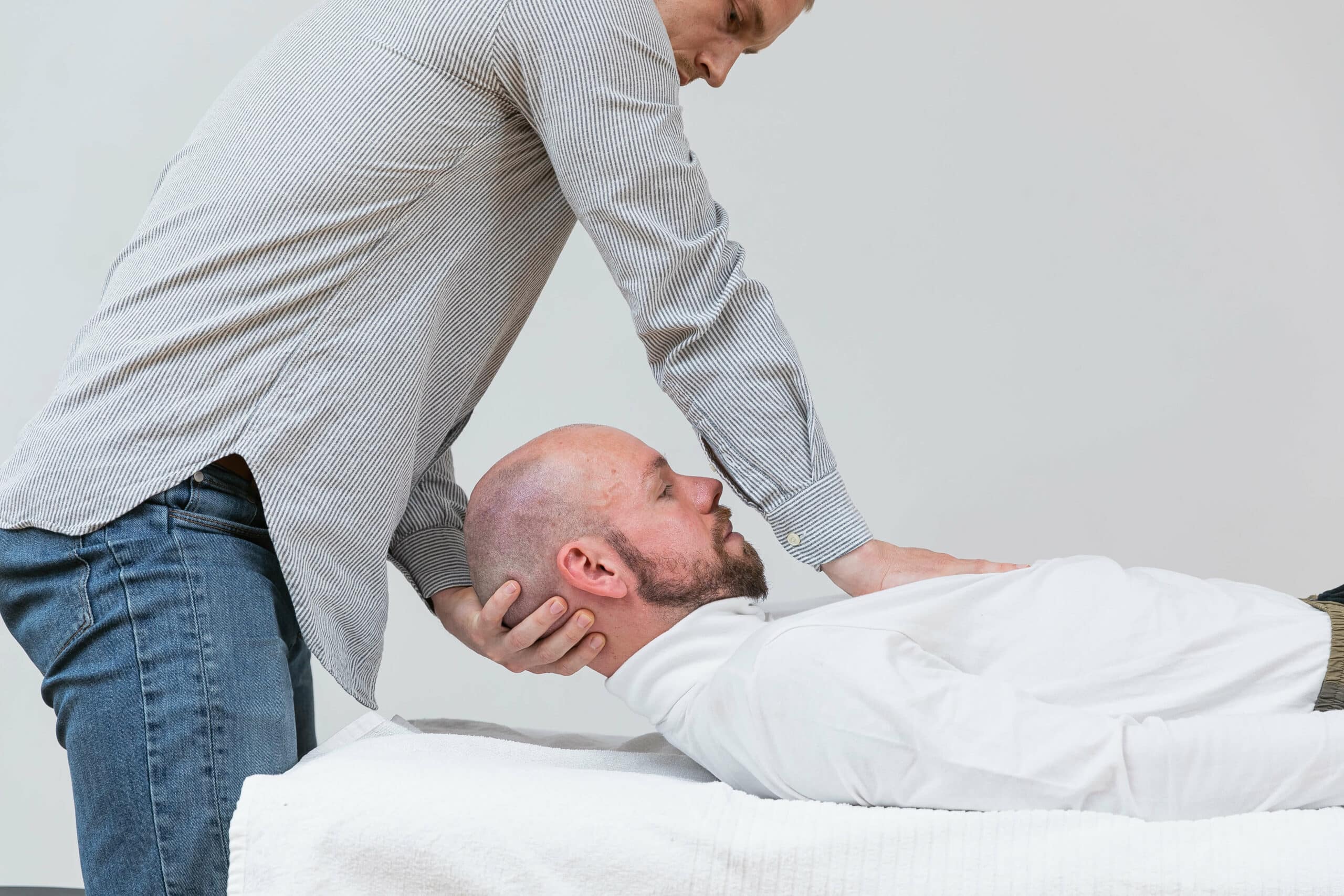
Vestibular dysfunction

Maxillary sinusitis

